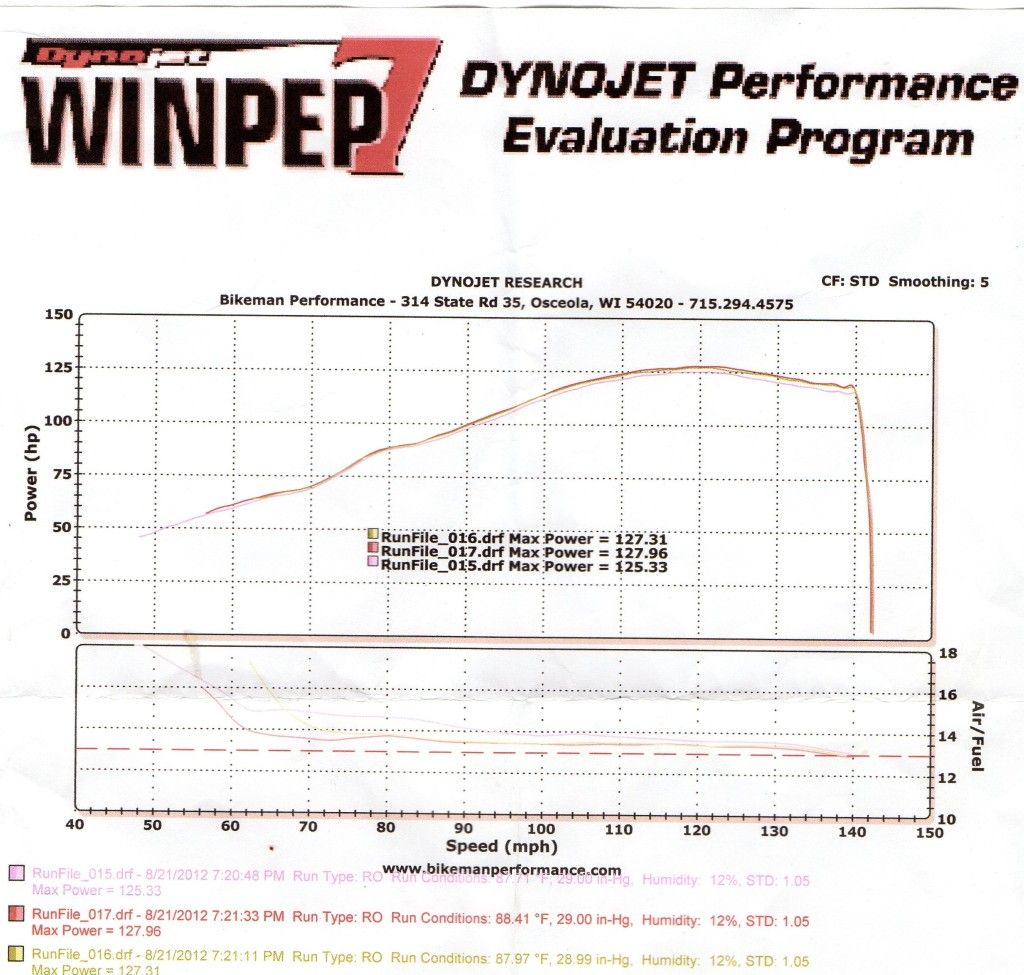carlson_mn
Well-known member
Saw many other bikes doing pulls and all seemed pretty spot on with what I have seen in magazines. My numbers seem typical but I may be sporting a few extra ponies than the average that I have seen.
The third pull is the one that is down a couple hp, probably a little heat soak. I always enjoy looking at these so thought I would share. Pulls were done in 4th gear, no connection to the spark plug so it is mph based rather than rpm. Tuner said the AF is spot on and he wouldn't change a thing if he could.
My bike: 2008, 36k miles with stock header, Leo Vince pipes with baffles in, stock airbox with funnel cut about 2/3 off (don't like flipping the air filter) and all CO's set at +7 over stock (17). Air filter has about 13,000 miles on it and I haven't touched it.
For reference I think 90mph in 4th gear is about 5500rpms which is when the FJR starts making 100+hp. I think that's pretty cool. Pretty impressive plateau of peak power on top as well I thought.
 ]
]
The third pull is the one that is down a couple hp, probably a little heat soak. I always enjoy looking at these so thought I would share. Pulls were done in 4th gear, no connection to the spark plug so it is mph based rather than rpm. Tuner said the AF is spot on and he wouldn't change a thing if he could.
My bike: 2008, 36k miles with stock header, Leo Vince pipes with baffles in, stock airbox with funnel cut about 2/3 off (don't like flipping the air filter) and all CO's set at +7 over stock (17). Air filter has about 13,000 miles on it and I haven't touched it.
For reference I think 90mph in 4th gear is about 5500rpms which is when the FJR starts making 100+hp. I think that's pretty cool. Pretty impressive plateau of peak power on top as well I thought.

Last edited by a moderator:





















































